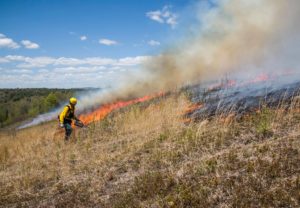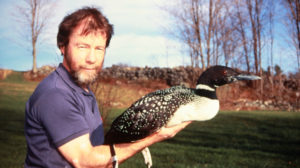During the Berkshire County League of Sportsmen meeting in May, 2018, Fish &Wildlife Board Member from the Western District Steve Sears reported that the Board had received a great presentation on whip-poor-will birds. They appear to be showing a very slight recovery in Massachusetts.
Whip-poor-wills, wow! I haven’t heard that bird since I was a youngster, probably in the 1940’s, when my father pointed out the call at dusk. According to MassWildlife, they pretty much disappeared from the Berkshires in the early 1970’s. Currently, there are only a few populations in Ma, mainly in the eastern part.
Until now, I had always assumed that the widespread use of DDT pretty much did them in, similar to what happened to the bald eagle, peregrine falcon and other birds. (DDT caused the birds to lay eggs with soft shells). DFW WD Supervisor Andrew Madden felt that there was more to it than DDT. If that was the main reason for their demise, then why aren’t they recovering quicker now that DDT is banned, like the raptors? He felt that it probably had more to do with their loss of habitat. He and Steve felt that possibly the prescribed burning that the Division is doing had something to do with their slow but gradual recovery.
They may be right. According to MassWildlife’s Natural Heritage Endangered Species Program biologists, whip-poor-wills seek dry, open woodlands with little understory adjacent to meadows and shrublands. The open woodlands are used for nesting and the adjacent meadows and shrublands are used for foraging. That probably explains why they were around my neighborhood back then as there were several 100+ acre farms. The cows probably kept the understory in the nearby woods down. Cows weren’t necessarily fenced out of those woods so that they could get into the shade on hot days.
According to MassWildlife, prescribed fire is an essential tool for managing wildlife habitats and natural communities throughout MA. Despite early spring rain and snow this year, they had a record season, burning over 415 acres!
For many decades total fire exclusion from all natural lands was general policy throughout Massachusetts and the entire United States. But, fire exclusion has resulted in the decline of numerous species and degradation of entire ecosystems.
Historically, fire played a fundamental role in shaping certain portions of the Massachusetts landscape. In particular, glacial deposits of excessively well drained sand and gravel soils tend to be associated with relatively short fire intervals. These soil types occur primarily in coastal areas and in association with major river valleys. Lightning-caused fires and/or fires set by Native people in these areas historically maintained highly productive wildlife habitats including heath lands, pitch pine/scrub oak barrens, and open canopy oak-pine woodlands.
Decades of fire exclusion following European settlement resulted in the decline of numerous species and degradation of entire fire-associated ecosystems. In Massachusetts, some vegetation and habitats have evolved with fire and are best maintained with periodic burning, including some areas that are home to state and federally listed rare, endangered, or threatened species. Prescribed fire is used to restore and maintain these habitats.
The primary concerns for all prescribed burns involve human safety and protection of built infrastructure. Planning is critical for every burn. Fire behavior and weather are monitored throughout the burn, and if the prescription parameters are exceeded the fire is “shut down”. Permits are required from the town fire chief and the air quality staff at DEP’s regional offices. The local fire chief can of course stop the fire at any time. There is a public meeting in most areas before prescribed burning is introduced. Abutting landowners are notified of fire dates, reasons, and expectations
Approximately 30% of the MESA-listed (endangered) plant and animal species in Massachusetts benefit from the conditions created and maintained by fire. Natural Communities that benefit from prescribed burning include Sandplain Grassland, Sandplain Heathland, Scrub Oak Shrubland, Pitch pine-scrub oak, Ridgetop pitch pine-scrub oak, Calcareous fen, and Oak woodland.
In follow-up to last week’s Deerfield River article
MassWildlife has launched a project to study brown trout in the upper Deerfield River. This spring, all 1,000 hatchery-raised brown trout stocked in the upper Deerfield were marked by clipping their adipose fins. The adipose fin is a small fatty fin on the dorsal surface (back) of the trout. Research has shown that the removal of this fin is the least intrusive, detrimental, or painful compared to all other fins on the body, and this work is performed by trained biologists with a specific research need.
These marked fish were stocked in their usual locations from Buckland to the Fife Brook Dam. This is the first phase of the project that will eventually mark all hatchery-raised fish in that section of the river. Marking of hatchery fish, together with other elements of the Deerfield River Brown Trout Study, will continue for several years. Anglers should note that for the next few years, there may be holdover hatchery-raised browns in the system that have not been marked.
This project to learn more about both the hatchery-raised and wild brown trout populations took shape through a collaborative process involving MassWildlife and Trout Unlimited. It included input and assistance from a number of other interested parties and individuals from UMass Amherst, US Geological Survey, local Deerfield River fishing guides, and local watershed groups. The study will yield important population metrics including abundance, mortality, and growth rates of individual fish. MassWildlife will use this information to better manage the upper Deerfield River brown trout fishery.
So long Bill Byrne, thanks for the pictures
For over four decades, the spectacular photographs taken by MassWildlife Senior Photographer Bill Byrne have brought sportsmen and women and other conservationists up close and personal with countless wildlife species from across the Commonwealth. Bill’s stunning images ranging from breaching humpback whales, foraging black bears, and secretive piping plovers to urban peregrine falcons, majestic Quabbin moose, and elusive timber rattlesnakes. 
Sadly, Bill’s life ended suddenly and unexpectedly in May while spending his last moments doing what he loved: being outdoors, honing his skills as a photographer, and talking photography and wildlife with colleagues and friends.
He is best known for his striking images of bald eagles, moose, black bears, shorebirds, waterfowl, deer, wild turkeys, and many other species, thousands of which have appeared on the cover of Massachusetts Wildlife magazine and other agency publications
He will be missed.
Back home
With luck my wife Jan and I returned home yesterday after a couple of weeks cruising around the British Isles (Ireland, Scotland, and England) and Normandy. There is some good fishing for brown trout and Atlantic Salmon over there but we were on a cruise with a tight schedule and there was no time for fishing. Plus, the possibility of getting a permit to fish there was probably rare and expensive.
One day, we sailed on Loch Ness. I seriously thought about trolling a flatfish off the stern of the cruise ship and catching the fabled monster, Nessie, thus putting to rest once and for all the speculation as to whether or not it exists. But I didn’t have a large enough net, and they probably wouldn’t let me keep it to mount anyway.
